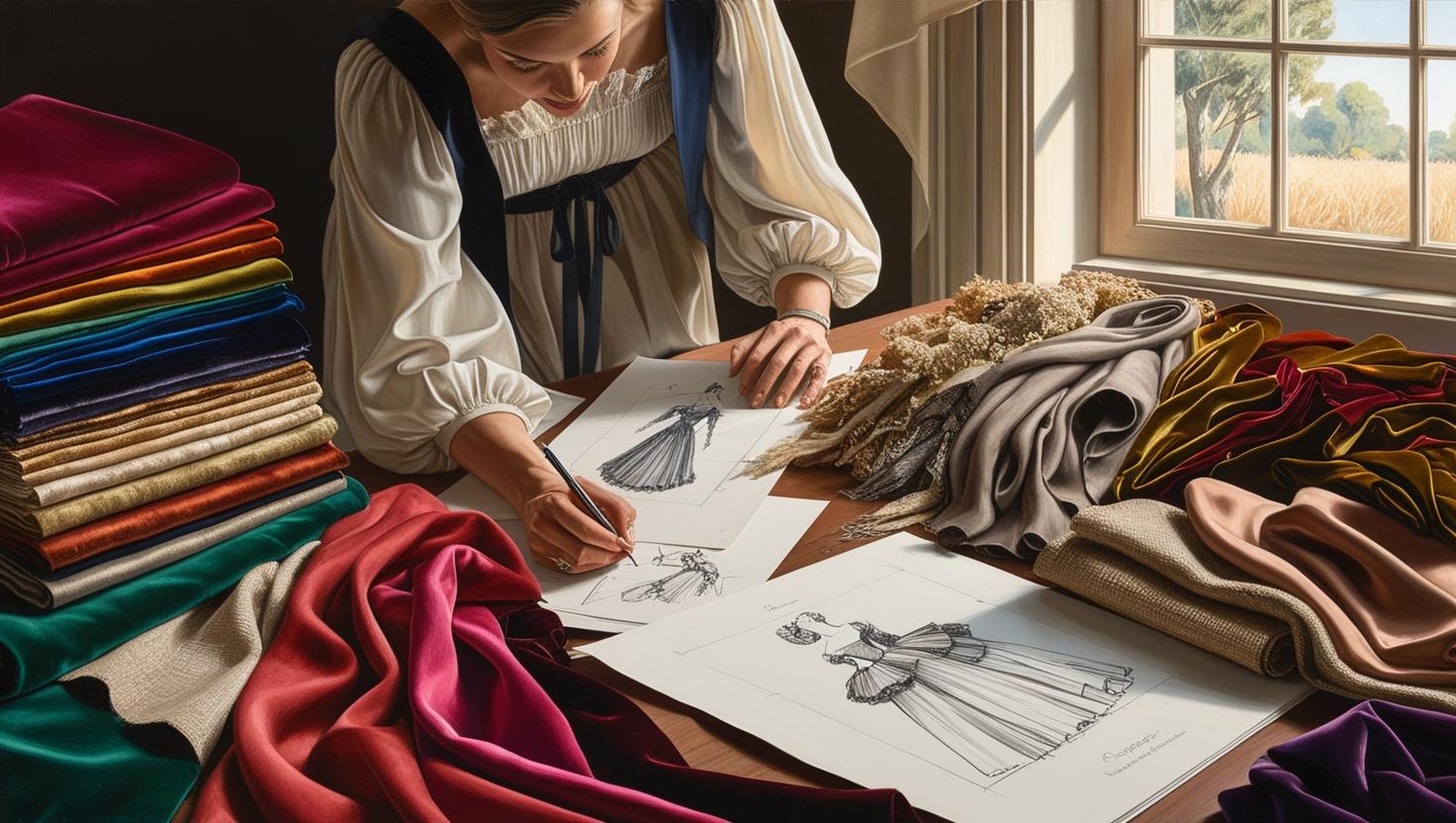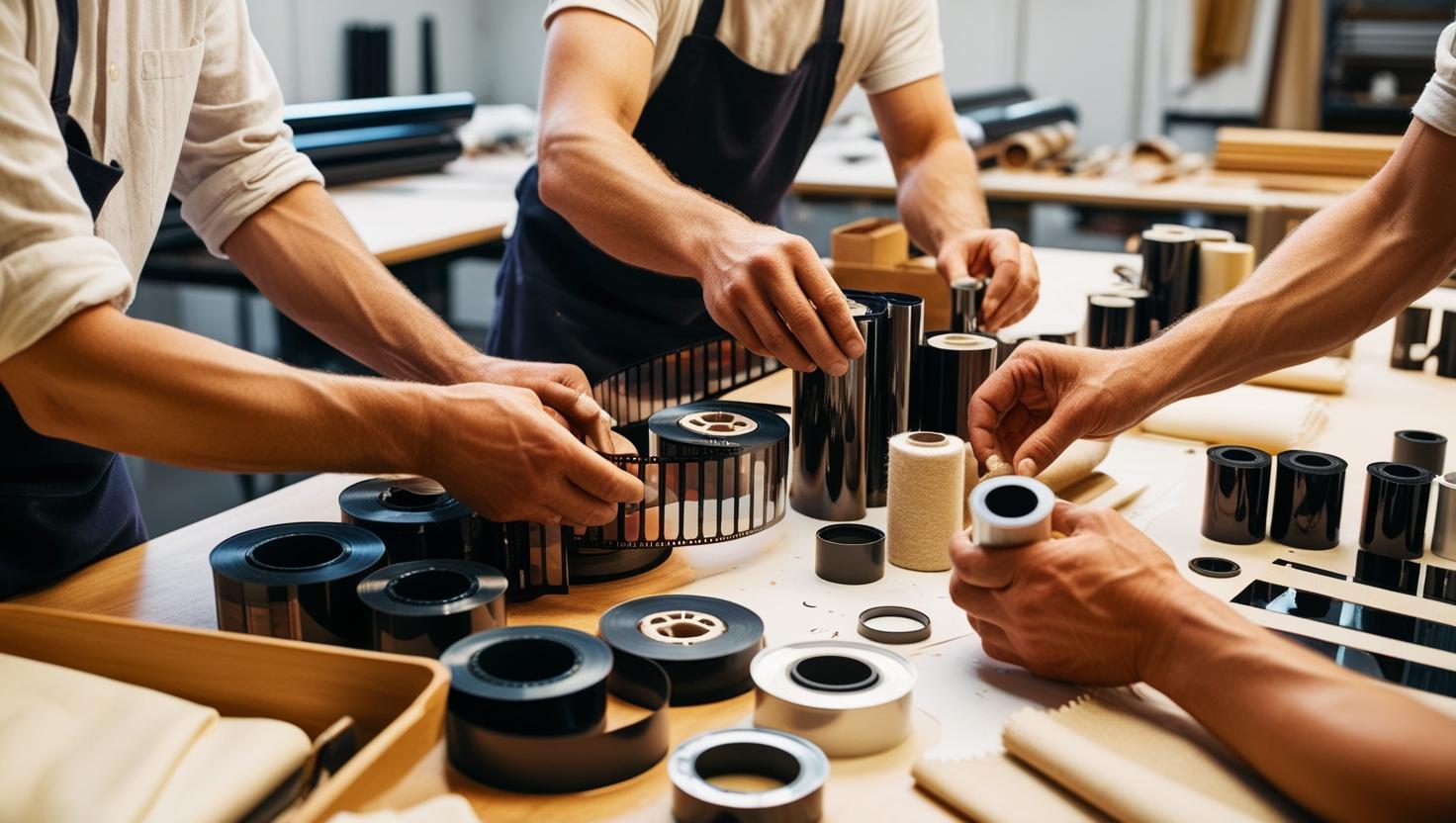The evolution of a film costume from initial concept to final on-screen appearance represents a captivating fusion of artistic vision, technical expertise, and collaborative storytelling. These garments function as powerful yet unspoken narrative elements, conveying essential information about characters, historical settings, and fictional worlds without uttering a single word. Behind each costume that graces the cinema screen lies an intricate development process involving historical research, creative innovation, thoughtful material selection, and precise construction techniques refined through generations of theatrical tradition and contemporary filmmaking practices. Exploring this creative journey provides valuable insights for both film enthusiasts and collectors who appreciate the craftsmanship and cultural significance of screen-worn garments.
The Role of a Costume Designer
The costume designer serves as the primary architect of a film's sartorial landscape, tasked with envisioning how clothing will express character traits, historical context, and thematic elements within the narrative. These creative professionals typically join productions during early development phases, collaborating closely with directors to interpret script requirements and establish coherent visual expression through character wardrobes. Their process often begins with comprehensive research into relevant historical periods, cultural contexts, or for fantasy and science fiction, the creation of plausible clothing evolution for imagined worlds. This investigative foundation provides the groundwork upon which designers construct their creative interpretations, balancing contextual authenticity with the practical demands of modern filmmaking.
Transforming conceptual ideas into practical garment designs involves various visualization approaches that communicate both aesthetic and functional elements. Many designers utilize traditional illustration techniques, producing detailed renderings that capture silhouettes, color schemes, and distinctive features for each character's wardrobe progression. Others incorporate digital tools or collage methods that combine reference imagery with original concepts to effectively convey their vision. These preliminary designs undergo numerous refinements as production elements evolve, with designers adjusting their concepts to accommodate script revisions, casting decisions, or location requirements. Throughout this developmental process, costume designers must harmonize creative expression with practical considerations such as performer comfort, movement requirements, and the technical constraints of filming environments.
Beyond artistic creativity, costume designers must demonstrate exceptional organizational and leadership abilities as they manage substantial budgets, coordinate specialized teams, and maintain continuity across complex production schedules. They develop comprehensive documentation detailing every character's costume progression throughout the narrative, ensuring logical evolution and maintaining consistency across scenes that may film non-sequentially yet appear consecutive in the finished film. For major productions, designers might oversee numerous specialized team members including associate designers, costume supervisors, pattern makers, textile artists, and skilled fabricators. This leadership role demands not only creative excellence but also effective communication skills and practical problem-solving capabilities to navigate the inevitable challenges that emerge during the costume creation process.
Fabric Sourcing and Construction Techniques
The selection of appropriate textiles constitutes a crucial early decision in costume creation, with designers seeking materials that satisfy multiple requirements including historical authenticity, visual impact, performer comfort, and practical durability. For period productions, locating fabrics that genuinely represent historical textiles while meeting contemporary production demands can prove particularly challenging. Some projects necessitate sourcing rare vintage materials, commissioning custom-woven fabrics, or developing innovative treatments for modern textiles to achieve appropriate appearance and behavior on camera. Considerations extend beyond mere visual qualities to include how fabrics move with performers' bodies, respond to various lighting conditions, and withstand production rigors where multiple identical versions of key costumes might be required.
Construction methodologies for film costumes combine traditional tailoring and dressmaking practices with specialized approaches developed specifically for screen work. Unlike fashion garments designed primarily for aesthetic appeal, film costumes must endure unique pressures including extended wear during repeated takes, action sequences, variable environmental conditions, and the need for rapid modifications between scenes. Many costume workrooms employ specialized techniques such as reinforced seaming, concealed gussets for movement, and strategic closures that facilitate quick costume changes. Depending on specific requirements, costume teams might create multiple versions of identical garments for different filming scenarios—lightweight variations for comfort during dialogue scenes, reinforced duplicates for stunt sequences, or partial constructions for shots where only portions of the costume will appear in frame.
Technological advancements have increasingly influenced costume construction processes, particularly for productions requiring unconventional materials or structures. Computer-aided pattern development allows for precise replication of complex designs across multiple costume copies, while advanced fabrication technologies enable the creation of elements that would be challenging or impossible to produce through traditional methods. Some productions incorporate electronic components, specialized lighting elements, or reactive materials that transform under specific conditions. Nevertheless, despite these technological innovations, many costume workrooms still depend heavily on traditional handcrafting skills for detail work that contributes significantly to the authenticity and visual richness of screen costumes. This integration of innovation and tradition characterizes contemporary costume construction, with techniques selected based on project-specific requirements rather than standardized approaches.
Collaboration with Directors and Actors
Effective costume design emerges through meaningful collaboration between designers and directors, who share responsibility for developing the visual vocabulary that communicates narrative themes and character development. Initial consultations typically establish fundamental aesthetic direction, including color schemes, silhouette evolution, and symbolic elements that reinforce storytelling objectives. These discussions often reference visual inspirations from diverse sources including fine art, photography, historical documentation, or cinematic precedents. Throughout pre-production, costume designers present evolving concepts for feedback, adapting their approaches based on directorial guidance while contributing their specialized knowledge regarding historical context, practical feasibility, and character expression through clothing. This collaborative relationship functions most effectively when founded on mutual respect for each participant's expertise and shared commitment to the overarching narrative vision.
The interaction between costume designers and performers represents another essential collaborative dimension, as actors frequently discover meaningful aspects of their characters through the physical experience of wearing particular garments. Preliminary fitting sessions provide valuable opportunities for performers to explore how costume elements might influence posture, movement qualities, or emotional states relevant to their characterizations. Many actors acknowledge that thoughtfully designed costumes help them access character psychology more intuitively, with structural elements, material weights, or period-specific components creating physical sensations that inform performance choices. Costume designers must balance their creative concepts with practical considerations of performer comfort and functional requirements, particularly for physically demanding roles or challenging filming environments.
The collaborative process extends beyond aesthetic considerations to include practical problem-solving throughout production. Costume designers regularly adapt their original concepts to address unexpected challenges such as location changes, weather variables, or evolving script elements. They coordinate closely with other creative departments including production design, cinematography, and makeup to ensure visual coherence across all screen elements. When tensions arise between creative vision and practical limitations, successful costume designers approach resolution collaboratively rather than rigidly maintaining initial concepts. This adaptability, combined with clear communication about costume functionality and symbolism, helps establish productive working relationships that ultimately enhance the film's visual storytelling through thoughtfully conceived character wardrobes.
Aging and Distressing for Realism
The specialized process of artificially aging and distressing costumes constitutes an essential component of creating believable screen garments, as even items intended to appear pristine within a narrative context rarely maintain immaculate condition throughout production. Skilled breakdown artists employ diverse techniques to create authentic-looking wear patterns that support character narratives and historical authenticity. These approaches might include strategic abrasion at natural stress points, calculated application of pigments to simulate environmental exposure, selective fading through various means, or intentional damage that suggests specific experiences relevant to character backgrounds. The most convincing aging effects typically incorporate multiple techniques applied in logical progression to create layered histories that appear genuinely weathered rather than artificially manipulated.
Various materials necessitate specialized distressing approaches, with breakdown artists developing material-specific techniques through extensive practical experience. Natural fabrics including cotton, wool, or leather each respond distinctively to different aging methods, requiring targeted approaches to achieve credible results. Synthetic materials present unique challenges, sometimes resisting conventional aging techniques or responding in ways that appear contrived rather than naturally weathered. For historical productions set in pre-industrial periods, breakdown artists must create wear patterns consistent with period-appropriate usage and maintenance practices rather than imposing contemporary wear expectations. The most accomplished practitioners in this specialized field understand not only how to create convincing surface treatments but also how these effects will translate visually under various filming conditions.
The nature and extent of costume distressing directly connects to character development, with aging techniques tailored to support narrative elements through visual storytelling. A character's social position, occupational activities, personal habits, and psychological state may all influence how their clothing exhibits wear patterns over time. Breakdown artists collaborate extensively with costume designers to ensure aging effects align with character backgrounds and narrative progression, sometimes creating evolutionary wear throughout a story's timeline. For productions requiring multiple versions of identical costumes at different narrative points, maintaining consistency across these iterations while showing appropriate progression presents a particular challenge requiring meticulous documentation and execution. When implemented effectively, thoughtful costume aging contributes substantially to the authenticity of character portrayals and the overall credibility of the film's visual world.
Case Studies of Iconic Costume Designs
Analyzing landmark costume designs offers valuable perspective on how exceptional creative work influences both cinematic history and broader cultural aesthetics. Iconic costume creations typically achieve perfect harmony between character psychology, narrative themes, and visual innovation—establishing looks that become inextricably linked with the characters they represent. These designs often transcend their original films to influence fashion trends, inspire subsequent filmmakers, and achieve recognition as significant cultural artifacts worthy of museum preservation and scholarly examination. The enduring impact of these designs reflects both their original artistic merit and their continued resonance with audiences across generations.
The progression from initial concept to iconic status frequently involves overcoming substantial creative and technical obstacles through innovative approaches. Many celebrated costume designs required pioneering new construction methods, material applications, or visual techniques that expanded the possibilities for character expression through clothing. The creative teams behind these designs often developed original methodologies for achieving specific visual effects or functional requirements that seemed unattainable within existing production practices. Examining the development process behind these groundbreaking designs reveals how creative constraints often catalyzed innovative solutions that subsequently influenced standard practices throughout the industry. The most significant costume designs frequently represent not merely aesthetic achievements but technical innovations that broadened the expressive potential of the medium.
The cultural afterlife of iconic film costumes extends well beyond their original productions, with the most significant examples entering prestigious collections, inspiring commercial merchandise, or becoming definitive reference points within popular culture. Original screen-worn examples of these influential designs often attain extraordinary value among collectors, recognized as important cultural artifacts rather than merely production materials. The continuing fascination with these costumes demonstrates how masterfully designed garments can transcend their functional origins to become enduring symbols that continue generating meaning and inspiration long after their films first appeared. Understanding the creation process behind these influential designs provides valuable insight into both filmmaking craftsmanship and the cultural significance of costume as a storytelling medium with impact extending far beyond individual productions.




Leave a comment
This site is protected by hCaptcha and the hCaptcha Privacy Policy and Terms of Service apply.